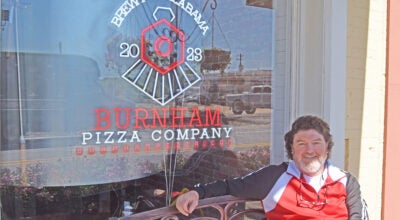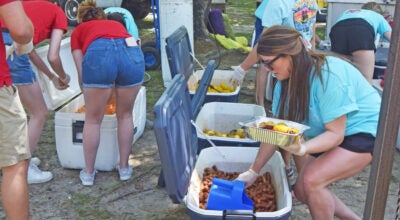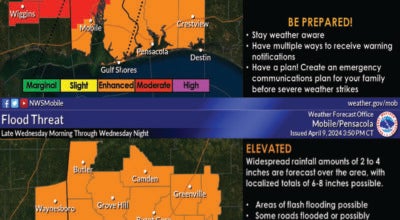Thanksgiving is 7 days aways: Time to thaw the turkey
Published 7:53 am Thursday, November 17, 2022
|
Getting your Trinity Audio player ready...
|
The turkey is the star of Thanksgiving, but it does no good if it is frozen, burned to a crisp or makes the family sick. Safely cooking the perfect turkey takes time and planning. An Alabama Cooperative Extension System food safety and quality expert provides a food safety guide to your Thanksgiving.
Thawing Takes Time
If you think you are going to pull out a frozen turkey the day before Thanksgiving and have it ready in time, you need to think again. Properly thawing a turkey takes time, which means planning ahead.
“The general rule of thumb is to allow 24 hours of thawing in a refrigerator per 5 pounds of turkey,” said Janice Hall, the Alabama Extension coordinator for Macon County. “So, if you are cooking a 15-pound turkey, you need to start the thawing process at least three days before you plan to cook it.”
While it may take a while, thawing a turkey is a refrigerator is the safest way. Hall recommends placing the turkey in a pan and placing it on the bottom shelf of the refrigerator. The pan will help prevent cross contamination as the bird thaws.
“It is extremely dangerous to thaw meat at room temperature,” Hall said. “The food temperature danger zone is from 41 F to 135 F. Thawing a turkey at room temperature falls within this zone, so it would create a perfect environment for harmful bacteria to grow.”
Cook Safely No Matter the Method
Roasting a turkey is an established method for cooking a turkey. However, in recent years, other methods—such as deep frying or pressure cooking—have gained popularity. Hall said no matter which method you choose, you must cook a bird to the correct internal temperature.
“Turkeys must be cooked to an internal temperature of 165 F,” Hall said. “To check the temperature, you need to have a food thermometer. Insert the thermometer into the thickest part of the turkey, either the breast or the thigh.”
Deep Frying
Deep frying a turkey is a great way to get a juicy, delicious bird. However, this method comes with its own set of safety precautions.
Jackson Cook, a firefighter with the Auburn Fire Department, said when setting up a deep fryer, it is important to choose a safe outdoor location.
“Don’t fry your turkey on a surface that is flammable such as a deck,” Cook said. “We recommend getting out on concrete or anywhere away from your structure. Also, it is always important to wear the right clothing. We recommend wearing long sleeves, pants, closed-toe shoes and gloves.”
One of leading causes of deep-fryer-related fires is overfilling the pot with oil. Hall said the cooking pot needs to be large enough to completely submerge the turkey without it spilling over the top.
“To determine the amount of oil you need, put the turkey in the pot and fill it with water until it is 1 to 2 inches over the turkey,” Hall said. “Remove the turkey and either measure the amount of water in the pot or mark a fill line on the outside of the frying container.”
According to Hall, the pot needs to be clean and dry before using. Once you are ready to fry, add the oil to the fill line you determined and heat to 350 F. Make sure your turkey is completely thawed. Frying a partially frozen bird will cause the hot oil to splatter. When the oil reaches the correct temperature, carefully lower the turkey into the hot oil and cook 3 to 5 minutes per pound.
Pressure Cooking
Need a quicker way to cook your turkey this year? Hall said the best way to cook one when you are in a pinch is by pressure cooking.
“One Thanksgiving, I realized that I didn’t have room in the oven to cook two turkeys and a ham, so I thought to use my electric pressure cooker,” Hall said.
When using this method, Hall starts by cutting the turkey in half and submerges it in chicken broth. She then adds celery, bell pepper, onion, poultry seasoning, garlic cloves, salt and pepper and sets the cooker on high for 50 minutes.
“Oh, my goodness. It was absolutely amazing,” Hall said. “It was so tender, flavored all the way through and far better than the one I cooked in the oven. Everyone raved over it.”
More Information
For more information on food safety, visit the Food Safety section of www.aces.edu or contact the food safety and quality agent serving your area.





